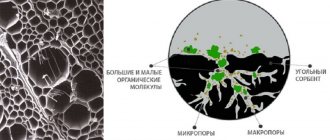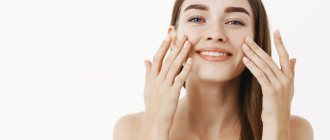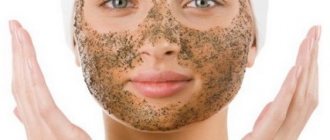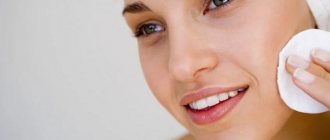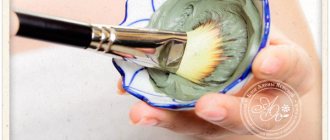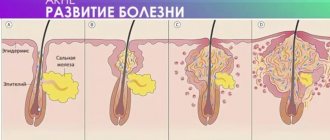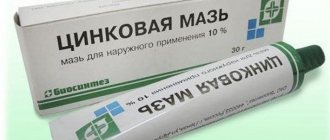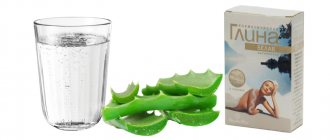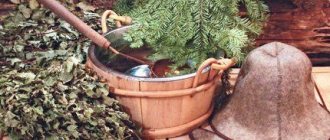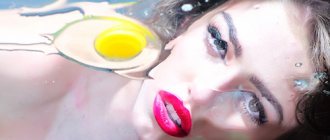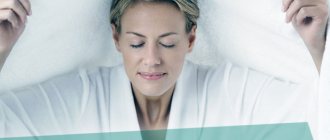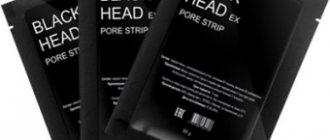What to take with you to the bathhouse
Women for whom going to the bathhouse is more than a boring hygienic procedure, but rather a kind of beauty ritual, are advised to make face masks in the bathhouse all year round and to do this, take with them several products from the following list:
- oatmeal,
- honey,
- eggs,
- salt,
- base and essential oils,
- cream,
- kefir,
- in summer - seasonal fruits and berries,
- cucumbers,
- in winter - citruses and other winter fruits.
In a Russian bathhouse, not only every cell of the body, but also the soul rests
This list can be supplemented with many components.
Options for bath masks
Don't forget to bring natural kvass or beer with you. But not for drinking, of course. You cannot drink anything stronger than green and herbal tea in the bathhouse. Beer is meant to be poured onto hot stones. Then the traditional bread spirit will hover in your steam room.
Anti-acne treatment
Many people make a number of mistakes when they want to get rid of acne and inflammation. For example, they may refuse moisturizers. This is one of the wrong steps in acne care, since oily shine has nothing to do with moisture levels, and insufficient hydration leads to intense formation of new foci of inflammation. Do not use drying agents too often. Lotions and tinctures that contain alcohol will work well against bacteria, but frequent use leads to dryness and dehydration of the skin.
When taking home care for acne, you should avoid mechanical impact on acne.
Cleaning the face with tools leads to the formation of new foci of inflammation, since infection can penetrate into the skin through damaged areas. If you do not know how to care for oily skin with acne, we do not recommend listening to the advice of bloggers or searching for information on the Internet. It is worth visiting a qualified doctor and getting detailed recommendations on care for acne and post-acne, so as not to make the situation even worse. February 13, 2021
Author of the article: dermatologist Mak Vladimir Fedorovich
Why is a face mask in a bathhouse so much more effective than a regular mask?
It turns out that the effectiveness of a face mask in a bathhouse is 3 times greater than that of a natural mask made at home. Because:
- At high temperatures, the pores expand, which means that a much larger amount of “benefits” from the mask will enter the skin through wide-open pores.
- In the bath, the skin is cleansed of impurities, toxins and excess liquid, which means additional space is freed up for beneficial substances from the mask.
- Exposure to high temperature stimulates increased blood circulation, which accelerates the processes of nutrition and skin regeneration. Therefore, the result is immediately obvious.
Go to the bathhouse regularly, you will always be healthy and beautiful
Getting ready for procedures
To regularly carry out cleansing steam baths and baths for acne and blackheads, you need to prepare a set of necessary “tools”.
Firstly, you will need a plastic basin or bowl with a volume of 3 liters. Moreover, these dishes cannot be used for other purposes - for example, doing laundry or washing vegetables in it is strictly prohibited. Therefore, it is advisable to purchase a new bowl or basin and designate its use only for the procedures in question.
Secondly, you will need a large towel that will completely cover your head and face when bowed. Such a towel should be thick enough and not allow air to pass through.
Thirdly, you need to stock up on various medicinal plants - for example, eucalyptus leaves, chamomile flowers, calendula flowers, aloe extract and others. But keep in mind that many plants can trigger an allergy attack, so you need to select them individually.
How to properly use natural cosmetics in a bath
There is an opinion that you should not enter the steam room with a mask on your face, they say, because of sweat, the entire mask will drain and the skin will become irritated. This is not entirely true. There are several types of sauna masks, and some are just needed to stimulate sweating.
Procedure 1 – making you sweat
First you need to throw out all the accumulated garbage: waste, toxins. This is done through intense sweating. Experienced steamers use the so-called “perspiration” mask. It makes you sweat in the bath, thereby enhancing the natural cleansing process. Such a simple component of the mask as salt copes with this task perfectly (preferably sea salt, but ordinary table salt will do). Make a salt mask in the waiting room between the first and second visit to the steam room.
Apply a special mask that stimulates sweating to your face and bask in the steam room for a while
Procedure 2 – cleansing
In order to get to the deep and nourishing layers of the skin, you first need to break the outer “armor” - keratinized layers of dead epidermal cells. Scrubs, which are solid particles of various sizes, can cope with this task. Scrub particles can be coarse or finely ground, which provides a hard or soft effect, respectively. You can use sugar, salt, ground coffee, nuts or any crushed fruit seeds. The scrub mask is applied to the face between the second and third visits to the steam room. After applying a thick layer of scrub, your face should be gently massaged in a circular motion. Just be careful not to overdo it, as steamed skin can easily be damaged. Rinse off, alternating warm and cool water.
Cleanse your face and body of dead skin with a scrub mask
Procedure 3 – nourishing
Now the time has come to supply the deep layers of cleansed, steamed skin with useful elements. Now she is definitely ready to receive the nutrients that the face mask prepared for her in the bath. Nutritious “cocktails” should be applied after a bath and shower.
After bath procedures, including patting with an oak broom, “feed” cleansed skin with a nourishing mask
Benefits of bath masks
While in the steam room, the pores open as much as possible, making it possible for beneficial natural microelements to penetrate deeply into the epidermis. Making masks under such conditions has the following properties:
- Deep cleansing of skin pores.
- Removal of toxic substances and oxidants.
- Getting rid of comedones (blackheads).
- Acceleration of skin cleansing from acne and other rashes.
- Deep hydration and saturation of the epidermis with vitamins.
- Smoothing the surface of the dermis.
- Increased skin tone.
- Improving the functioning of the vascular system.
- Elimination of swelling and redness.
- Giving the skin youth and freshness.
- Evens out skin tone.
- Eliminating the effects on the face from depression and regular fatigue.
Bath masks can improve the overall condition of the facial skin, keep the dermis in tone, and also avoid the appearance of skin diseases.
Recipes for simple and effective masks
Honey-salt “sweat-dispersing” mask for procedure No. 1
Ingredients:
- 1/3 cup sea salt,
- 1/3 cup honey.
The mask is prepared immediately before applying to the skin; this cannot be done in advance, otherwise the salt will dissolve. Salt is mixed with honey until foam forms. Apply a very thick layer to the face without rubbing. Now you can go to the steam room for 15 minutes. If you are allergic to honey, you can replace it with butter. And if sensitive skin cannot tolerate the aggressive effects of salt, replace it with black radish juice.
Oatmeal mask-scrub for procedure No. 2
In order to prepare a miraculous cosmetic product for the face, you don’t have to spend money on newfangled scrubs with clay from the bottom of the Dead Sea and the like! There is an equally miraculous oatmeal, which, believe me, your skin will thank you for.
Ingredients:
- a handful of rolled oats,
- a handful of salt
- half a glass of kefir.
Honey scrub mask for procedure No. 2
Ingredients:
- 1/3 cup honey
- 1/3 cup cinnamon.
The mask should not be prepared in advance. After application, the skin should be gently massaged. Cinnamon can be replaced with coffee grounds.
Curd nourishing mask for normal skin for procedure No. 3
Ingredients:
- cottage cheese,
- kefir,
- carrot juice,
- olive oil.
Mix the components of the mask in equal quantities and apply to the face for half an hour.
Lemon-yeast nourishing mask for oily skin for procedure No. 3
Ingredients:
- 20 g yeast,
- 100 ml lemon juice.
Mix the ingredients until you obtain a consistency similar to sour cream. Apply the mask to your face for 15 minutes.
Yolk nourishing mask for dry skin for procedure No. 3
Ingredients:
- 1 egg yolk,
- 1 tbsp. olive oil,
- 1 tbsp. honey,
- 5 drops of lemon juice.
Keep the mask on your face for half an hour.
Universal oat-milk nourishing mask for procedure No. 3
Oatmeal masks are especially suitable for mature skin, however, oatmeal will be useful for absolutely all women.
Ingredients:
- half a glass of oatmeal,
- 50 ml milk,
- 1 yolk,
- 1 tbsp. olive oil,
- 1 tbsp. honey
Pour hot milk over the oatmeal, cool, add egg, butter, honey. It should be applied not only to the face, but also to the neck, décolleté, and the whole body will benefit from this composition.
Go to the bathhouse at least once a month, this will strengthen your body and rejuvenate your skin.
Don't forget about the seasonal gifts of nature! Make fruit and vegetable masks in the bath with carrots, potatoes, cucumbers, tomatoes, grapes, plums. For example, nothing can compare to a cucumber mask for its ability to moisturize the skin. Making a cucumber mask is quite simple: grate the vegetable and spread the resulting pulp on your face. In the bathhouse, you can do several nourishing masks one after another. Don't miss the opportunity to nourish your skin to its fullest!
You can diversify the menu of masks for your skin as much as your imagination allows. As a finishing touch to your bath procedures, we recommend oiling your skin with your favorite base oil.
Types of facial skin care products
If 20 years ago there were only a few types of cosmetic products, such as gel, cream, tonic and mask, today the variety of the assortment simply makes one’s eyes wide open. Fluids, emulsions, toners - what are they? What are they needed for? And are they really necessary? For a basic set of skincare cosmetics you will need only 4 types of products, which are classified according to their purpose. Types of facial skin care products:
- For cleansing - gel, foam, mousse, oil, jelly, makeup remover wipes.
- For toning - tonic.
- For moisturizing - cream, cream-gel, lotion.
- For nutrition - cream, night mask.
Who is the procedure not recommended for?
Contraindications to exfoliation are:
- herpes infection and other infectious diseases in the active stage
- diseases of the kidneys, liver, cardiovascular system, cancer and other severe somatic diseases
- diabetes
– pregnancy and breastfeeding period
- minor age (under 18 years old)
- individual intolerance and allergic reaction to the ingredients of the composition
- damage to the skin, inflammation of the skin
Before the exfoliation procedure, consultation with a specialist is necessary in any case, because In addition to absolute contraindications, there are other reasons that may justify postponing the procedure for some time. Thus, peeling is not recommended while taking a number of medications (immunosuppressants, retinoids, etc.) or in the case of recently performed traumatic cosmetic procedures (deep cleaning, mesotherapy, etc.). In addition, contraindications also include the presence of a tan and menstruation period.
What is a chemical facial peel?
The cells of the outer layer of skin (epidermis) are able to renew themselves; in youth, no additional external efforts are usually required for this. But with age, renewal processes slow down and require stimulation. In modern cosmetology, there is a highly effective and safe method that stimulates exfoliation and removal of the stratum corneum - exfoliation, or peelings.
Chemical peeling is a salon procedure aimed at intensive exfoliation of dead cells of the outer layer of skin using special substances - acids. In other words, chemical peeling removes dead cells, thereby stimulating the renewal processes of the epidermis and dermis.
In addition to various acids (glycolic, fruit, lactic, etc.), the compositions of chemical peels may also contain other highly effective components that have anti-inflammatory, whitening, nourishing and healing properties, so the peeling procedure is increasingly gaining popularity, becoming one of the most popular procedures in modern cosmetology.
Chemical peeling stimulates the body's protective functions, which leads to increased production of hyaluronic acid, collagen and elastin - these substances are responsible for the structure of the skin, its youth and elasticity. The result of exfoliation is an improvement in skin tone, smoothing out unevenness, acne marks and fine wrinkles. In addition, peeling procedures also help fight pigmentation.
Depending on the degree and depth of exposure, there are several types of chemical peels.
